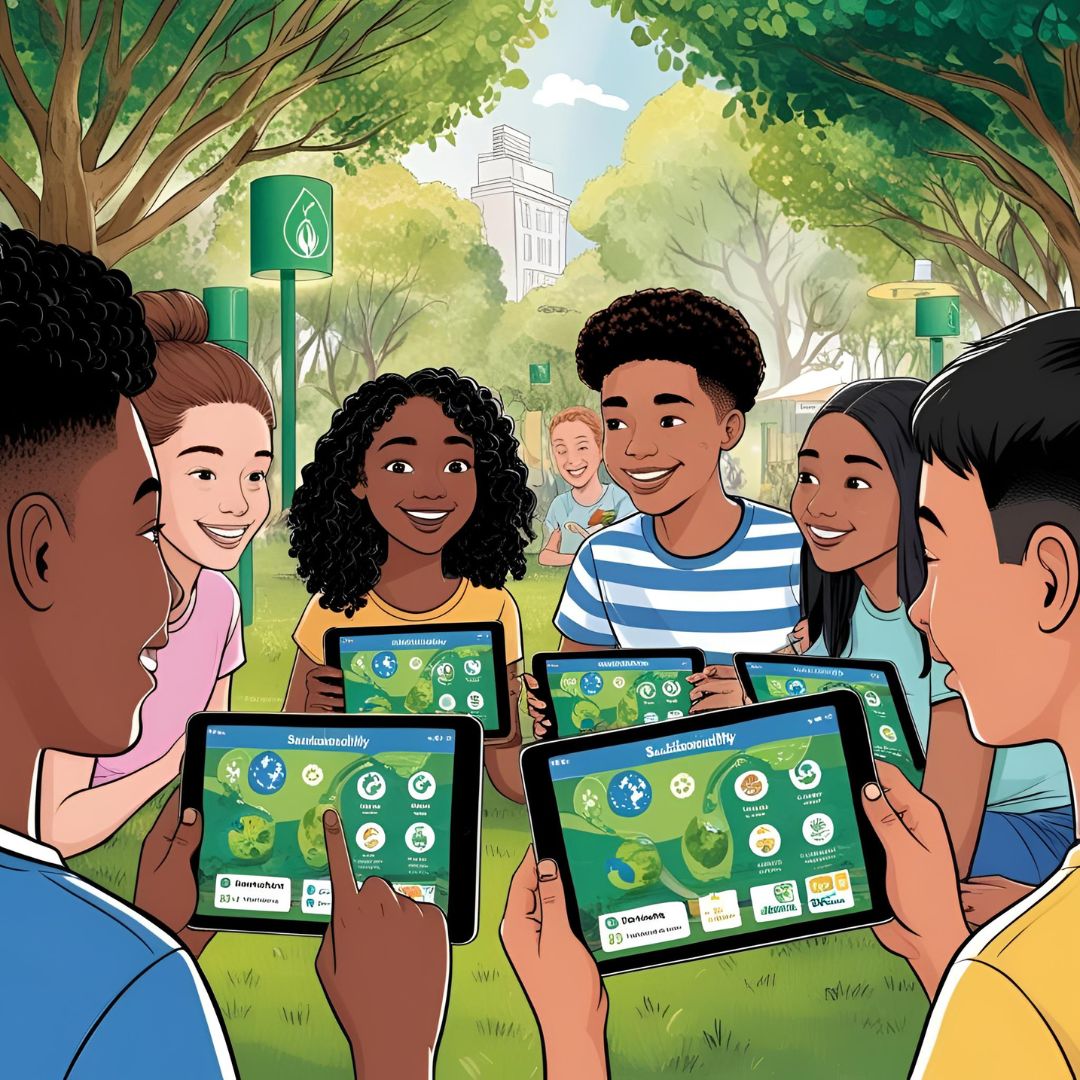Technology has proven to be a powerful ally in the teaching and learning process, especially when it comes to environmental education. Instead of traditional methods that don’t always engage young people, it’s now possible to teach sustainable practices through apps and digital games. This approach, known as green gamification, transforms environmental content into immersive, fun experiences full of rewards, awakening a much more active environmental awareness in teenagers and pre-teens.
How Gamification Effectively Promotes Environmental Education
Using gamification to teach sustainability has proven to be a powerful strategy, particularly for younger audiences. By incorporating elements such as scoring, challenges, rewards, and rankings, apps can keep users engaged for longer periods, encouraging them to repeat sustainable behaviors both in the digital and real worlds.
Moreover, educational games focused on the environment are designed to teach without feeling like an obligation. The accessible language, interactive graphics, and engaging stories create an emotional connection with the player, making it easier to absorb concepts like recycling, water conservation, wildlife preservation, climate change, and more.
Apps That Teach Sustainability in a Fun Way
There is a wide variety of educational apps using green gamification to engage teens and pre-teens in eco-friendly practices. Here are some standout options.
OecoGame
This app turns everyday life into an eco-friendly journey. Users earn points for logging sustainable actions like recycling, using public transport, or reducing plastic consumption. The app also offers weekly challenges and allows users to compete with friends, making the experience more social and motivating.
Trash Game
Perfect for school-aged kids, Trash Game teaches correct waste sorting in a playful way. With levels that simulate environments like kitchens, schools, and parks, players must identify where each item should be discarded. Progress is rewarded with medals, new scenarios, and educational tips.
Seed: Forest Guardian
In this digital game, the player becomes an environmental guardian tasked with restoring deforested areas, rescuing endangered species, and stopping illegal logging. With charming graphics and an engaging narrative, players learn the importance of biodiversity and reforestation while completing eco-missions.
Digital Games That Spark Environmental Awareness
Beyond apps, there are games specifically developed to teach sustainability using even more advanced resources. Platforms like computers, tablets, and consoles provide immersive experiences that stimulate critical thinking and conscious decision-making.
Eco – Global Survival Game
Ideal for older teens, this game presents a complex simulation of a real ecosystem where every player action directly impacts the environment. The goal is to build a sustainable society before the planet is destroyed. Players must collaborate, create environmental laws, and balance economic development with ecological preservation.
Green the Planet
Aimed at a younger audience, this game mixes humor and sustainability. Players work to revitalize abandoned planets by collecting space junk and using green technologies. While having fun, users learn about composting, renewable energy, and resource reuse.
Benefits of Using Eco Apps to Shape Environmentally Conscious Youth
Green gamification is more than a trend; it’s a transformative tool. By using games and apps as part of the educational process, parents and teachers can involve young people in environmental causes without having to force their interest.
One of the main benefits is the early development of sustainable habits. By repeating actions in the virtual environment—like saving energy or planting trees—teens are more likely to adopt those behaviors in real life. This creates a positive cycle of learning and change.
Another key point is encouraging systems thinking. Sustainability games help youth understand how their actions impact the world around them. They begin to see the consequences of waste, pollution, and consumerism more clearly and directly.
Choosing the Right Eco Game for Each Age Group
To ensure effective learning, it’s important to choose games appropriate for the child’s age and maturity level. Pre-teens are generally drawn to visual games with short missions and constant feedback. Teenagers often prefer strategic challenges that require planning and decisions with long-term consequences.
It’s also essential to check whether the game or app content is based on real data and reliable sources. This ensures that the information young people absorb about the environment is accurate and trustworthy.
Encouraging Conscious Tech Use to Help the Planet
While promoting the use of apps and digital games that teach sustainability, it’s equally important to encourage mindful use of technology. Balancing screen time with outdoor activities can further reinforce learning. Motivating youth to apply what they’ve learned in real life—such as planting a tree or reducing plastic use—strengthens the connection between virtual learning and real-world impact.
Parents can also get involved by tracking progress, discussing what’s being learned, and proposing eco-friendly family actions. This blend of digital education and family bonding makes the learning process even more meaningful and long-lasting.
Turning Fun Into Environmental Awareness
With green gamification, environmental learning takes on a new, more appealing form—one that aligns with the digital world young people already inhabit. Using technology to teach sustainability is an effective way to shape more conscious citizens, prepared to face today’s and tomorrow’s environmental challenges.
More developers are expected to create educational solutions with an ecological purpose, allowing teens and pre-teens to learn through play and become agents of change in their communities.












